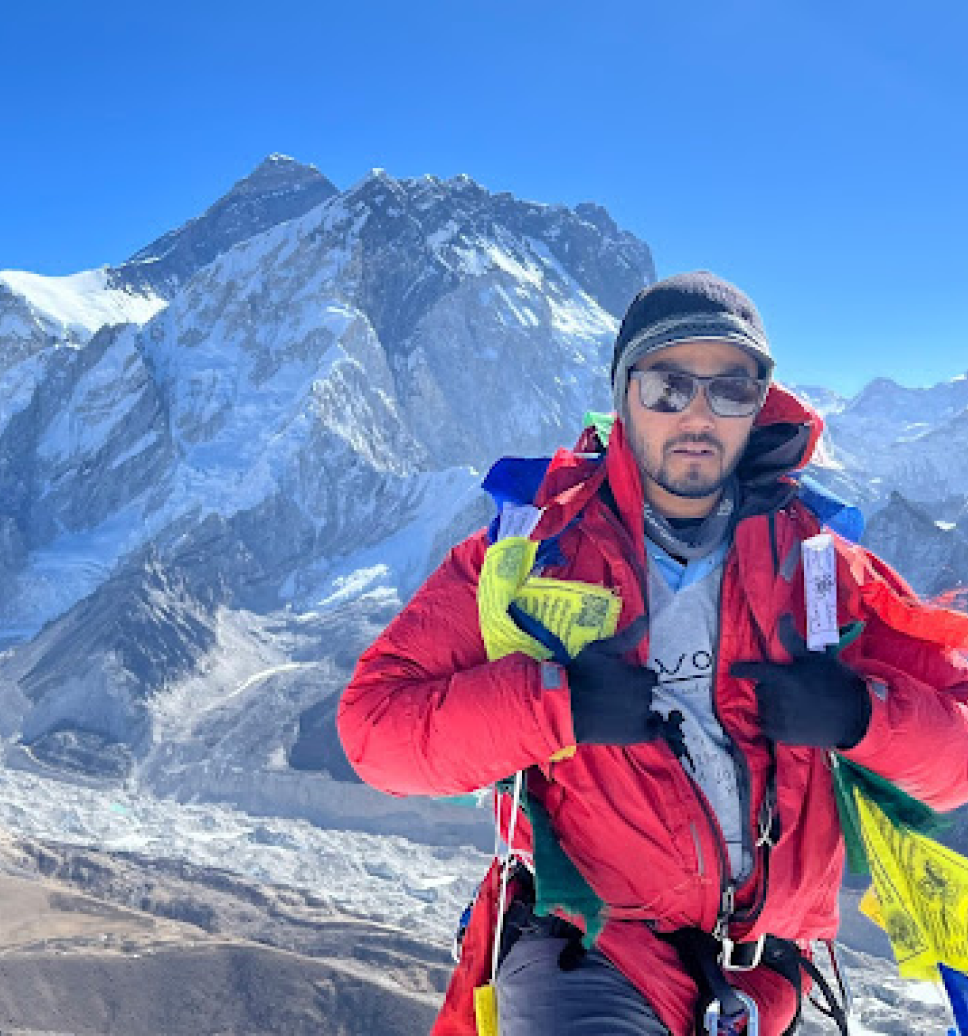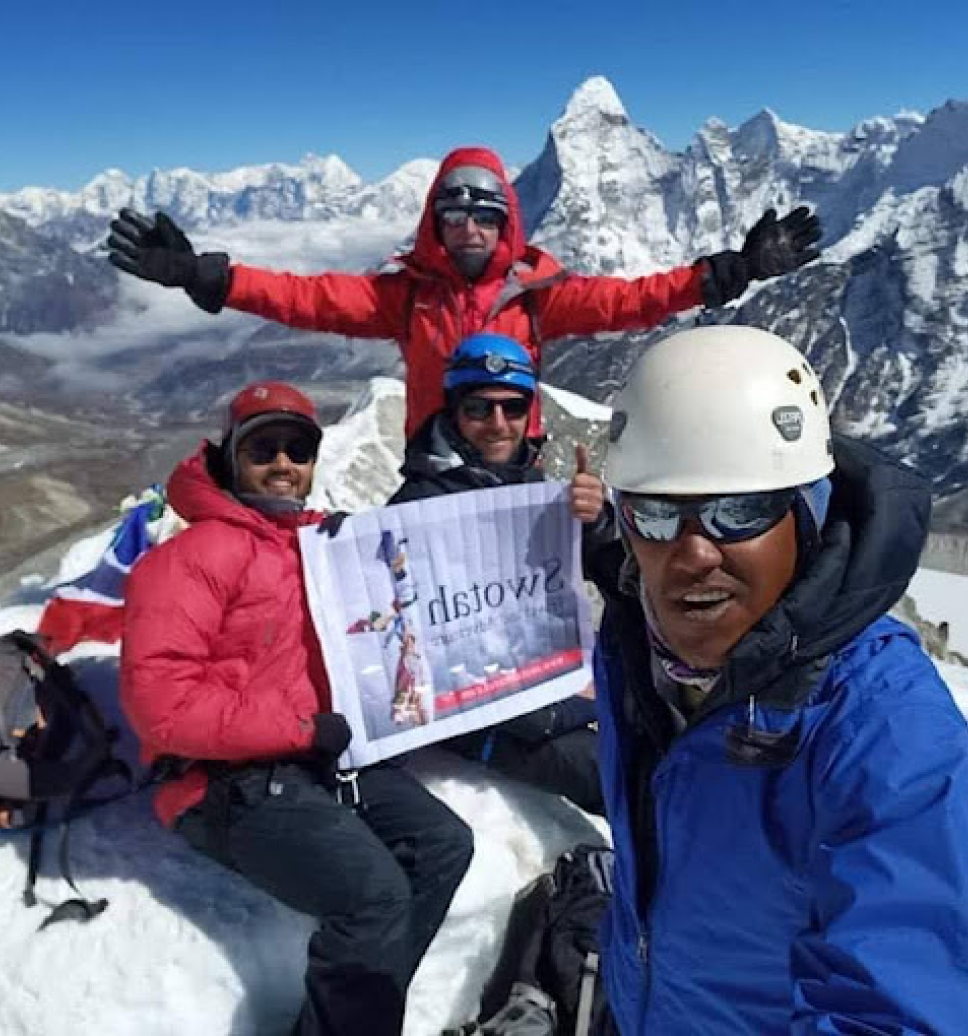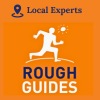GUARANTEED DEPARTURES
Check upcoming trip dates, availability & prices. If you can't see dates that suite you, contact us we will do our best to assist you.
| GUARANTEED DEPARTURES | PRICE | AVAILABILITY | |
| Mar 17, 2026 - Mar 24, 2026 | $1350 | High | |
| Mar 28, 2026 - Apr 5, 2026 | $1350 | High | |
| Apr 14, 2026 - Apr 22, 2026 | $1350 | High | |
| May 12, 2026 - May 20, 2026 | $1350 | High | |
| Sep 15, 2026 - Sep 23, 2026 | $1350 | High |
Trek Highlights
- Nepal is rich in honeybee diversity: there are five types of bee species in Nepal.
- Popular destinations for honey hunting are Bhujung, Nai Chi, Pasagaun, Naya Gaun, Ludhi, and Dare.
- Red honey is also known as "mad honey" because it contains a toxin called grayanotoxin.
- Mostly, Gurung and Magar tribesmen hunt for honey.
- The best seasons are spring and autumn.

You have seen them on TV, in magazines, and on the internet and wondered how the honey hunters do their job in real life. If you wish to be a part of the hunting group to witness these brave people risking their lives to steal honey from wild bees, and you love trekking, then this trip is just the right program for your next visit; you will trek in the lap of Annapurna and see the hunters do their job effortlessly leaving you amazed with their skills, bravery and not to forget their hospitality. So give a chance to these local people to serve your queries and fascination and leave you in awe of their beautiful culture and hospitality.
Photo Gallery
Dive into our gallery to get a glimpse of the awe-inspiring vistas waiting for you on our guided treks across stunning landscapes.
Brief Itinerary
Day
1
ARRIVAL AT KATHMANDU (1350M)
Day
2
KATHMANDU SIGHTSEEING
Day
3
DRIVE TO BESISAHAR, TREK TO GHALE GAUN (2100M)
Day
4
TREK TO BHUJUNG (1600M)
Day
5
TREK TO PASAGAUN (1650M)
Day
6
TREK TO NANNGDIDHAR (1310M)
Day
7
TREK TO THUMSIKOT, DRIVE TO POKHARA (850M)
Day
8
SIGHTSEEING OF POKHARA, DRIVE BACK TO KATHMANDU
Day
9
DEPARTURE
Comprehensive Trek Guide
Honey hunting in Nepal is an old tradition that has been kept alive by the Gurung and Magar communities in the remote villages of Bhujung Pagan, Naya Gain, Ludhi, and Dare. The locals have adapted honey hunting as a profession for hundreds of years. Honey hunting is still followed by those communities of people who risk their lives while hunting for wild honey without proper equipment.
Honey hunting is done two times a year when honey hunters come together. These wild honey hunters in Nepal hang on a single rope without any safety harness or other safety measures. One must be proficient in rock climbing to extract wild honey from hives in cliffs as high as 3000 meters using bamboo ladders prepared to be stung by wild bees.
While a tradition, honey hunting in Nepal is also done for the medicinal value of honey. Honey consumption helps to improve your immunity power and supports metabolism. Consumption of honey also helps to maintain your body temperature, which is noteworthy if you are a Himalayan native. No big surprise these locals risk their lives for this delicious fluid. Additionally, this organic honey is widely famous and earns them their living.
Honey hunting trips in Nepal are wonderful off-the-beaten-track treks to get acquainted with the culture, ancient profession, spectacular views of Annapurna, and the flora and fauna of Nepal. Furthermore, you will get to taste organic honey—some people also call it mad honey.
Honey hunting in Nepal can only be done during certain months, including March/April or September/October/November. So, if you are excited and brave enough to witness honey hunting, you can book your date.
Tipping Recommendation
We recommend allocating 10-15% of your total tour cost to tipping guides, drivers, and other hardworking staff who ensure your experience is unforgettable. While tipping is not mandatory, it is a meaningful way to support the seasonal workers who dedicate themselves to making your trip extraordinary.
By booking with us and participating in the tipping culture, you are directly contributing to Nepal’s local economy and helping sustain the tourism workforce. This support is crucial in retaining talent within the country and addressing challenges like brain drain.
Your generosity makes a lasting impact—thank you!
Detailed Itinerary
Meals: Dinner
Accommodation: Hotel
Meals: Breakfast
Accommodation: Hotel
Meals: Breakfast,Lunch,Dinner
Accommodation: Homestay
Meals: Breakfast,Lunch,Dinner
Accommodation: Camping
Meals: Breakfast,Lunch,Dinner
Accommodation: Camping
Meals: Breakfast,Lunch,Dinner
Accommodation: Camping
Meals: Breakfast,Lunch
Accommodation: Hotel
Meals: Breakfast
Accommodation: Hotel
Meals: Breakfast
Accommodation:
What's Included
- Airport transfers;
- Standard/Deluxe rooms in Kathmandu on twin/double sharing with breakfast;
- Accommodation during the trek (or camping in case of need);
- All meals (breakfast, lunch, dinner with one drink along) during the trek;
- Authorized English-speaking guide;
- Overland transfer: Kathmandu to Beshisahar and back from Pokhara to Kathmandu;
- All applicable government tax;
- All expenses for all staff: meals, accommodation, salary, equipment, insurance, transportation;
- All necessary paperwork;
- Sightseeing of Kathmandu Valley with city guide on a private vehicle;
- Medical kit (carried by your trek leader).
What's not Included
- International flights;
- Nepalese visa fee;
- Extra night accommodation in Kathmandu because of an early arrival and late departure;
- Lunch and evening meals in Kathmandu;
- Travel and rescue insurance;
- Personal expenses (phone calls, laundry, bar bills, battery recharge, extra porters, bottle or boiled water, shower, etc.);
- Entrance fees during sightseeing;
- Tips for guide(s) and driver(s).
Frequently Asked Question
1. Will somebody come to pick me up at the airport upon arrival
2. Is there an Orientation program
3. What is the overnight accommodation like
4. How big are the groups
5. Can I do solo trek
6. For what purpose this trek is Popular
7. Is Honey Hunting trip is safe for women
8. What about security during trekking
9. What sort of food can I expect in trekking
10. Is the drinking water safe in trekking region
11. What mode of transportation do you use
12. What is the best season for trekking
13. Will I be taken care of during emergency
14. What is appropriate dress for trekking
15. Is it possible to alternate or change the day trips
16. Are your guides reliable and certified
17. How can I charge my electronics during the trip
18. Is there any communication while we are on trekking
19. Can I add extra days to my trekking trip
20. What immunizations will I need
21. How many hours do I have to trek each day
22. How will my booking be processed
23. Can we use the credit card during the trek
24. Do we need to carry our bags by our self or you will provide porters
Got a question about this tour?
Or looking for customize trip, reach out to our travel experts
Company Reviews
Similar Trips
Related Trips
Let your travels tell a story—crafted by locals, inspired by mountains, and lived by you.



















